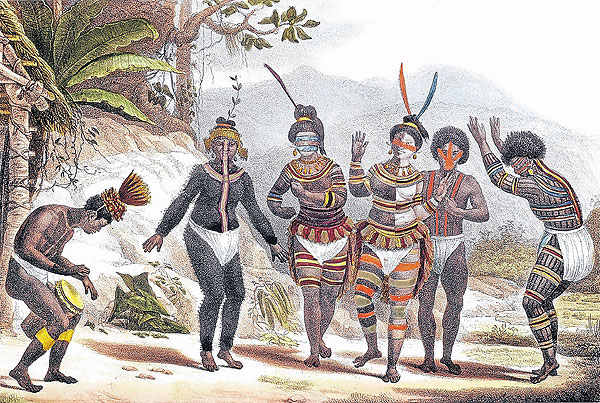With the world having descended into a football-mad frenzy, the spotlight has fallen firmly on Brazil. Thousands of diehard sports fans have flocked to this year’s World Cup destination and after putting down Brazil by Regis St Louis, you’ll probably want to join them.

Brazil
Regis St Louis
320pp
1,495 baht
ISBN: 978-1-84796-052-8
Available at Asia Books
The book’s six chapters cover the country’s history, people, culture, natural beauty, art and architecture and natural resources and industry. Concise and informed introductions on each category precede pages of impressive photography. But St Louis’ image choice is not purely aesthetic — the pictures and their captions tell a story. In the “History and Early Development” chapter, paintings and photographs are used to recount Brazil’s past, from its earliest inhabitants crossing over from Siberia, through its brutal colonisation by Portugal and the slave trade, to the dictatorship and debt it suffered during much of the 20th Century.
Most remarkable is the sheer variety found in pretty much every area of Brazil. Its prodigal blend of ethnicities includes people with African, European (mainly Portuguese, Italian and German) and Japanese roots, as well as 200 indigenous tribes.
This ethnic diversity means that there is great variation in religions, customs, food and festivals. Brazil’s most famous event is the carnival — “the world’s biggest street party”. Synonymous with the carnival is Samba; a genre of music and dance with African roots.
Then there’s the geographical diversity, ranging from the imposing Iguazu Falls with its 275 individual cascades to the Pantanal — the wildlife spotter’s favourite hangout: from the islands aligning Brazil’s 7,500m of coastline to the outback-like Chapada with its big skies and sandstone hills. And, of course, there’s the Amazon — the world’s richest ecosystem — with its multitude of animal and plant species.
Particularly worth reading is the “Cultural Beat of Brazil” chapter, which includes images of the carnival and some of the many other festivals, as well as interesting pictures and anecdotes on Brazilian music, cinema, fashion and, of course, football.
“The beautiful game,” writes St Louis, “is so popular in Brazil that many skip work on an international match day, crowds spill out of bars into streets and nothing compares to the crackling electricity in the air when the national team takes to the field.”

A nation of many races.

Portuguese colonial architecture has left its legacy across Brazil, such as in these Mariana churches.

Neymar, left, has been tipped as the next big thing in Brazilian football and has been praised by Pelé for his skill.

Brazil is believed to be home to up to 60 uncontacted tribes, meaning it has the greatest number of isolated inhabitants in the world.

French painter Debret’s impression of indigenous tribesmen, early 1800s.

The Amazon is home to thousands of species, including the fearsome jaguar.

The degrading conditions for workers of the Serra Peladda gold mine in Para shocked the world in the 1980s.

Pelé, one of football’s all-time greats, is hailed as ‘O Rei’, The King.
